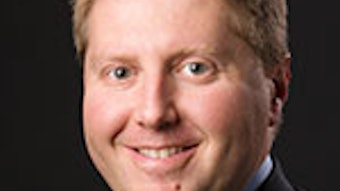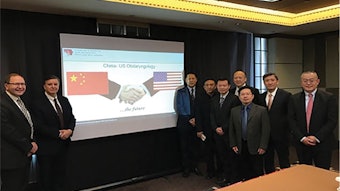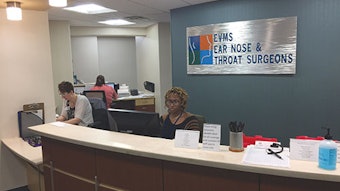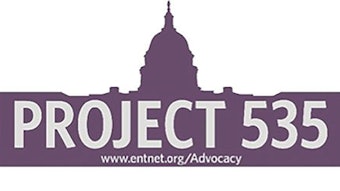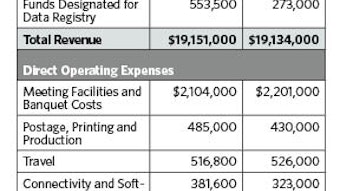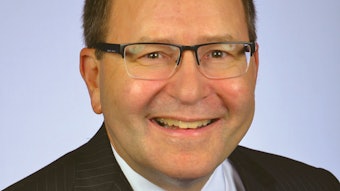Medice, cura te ipsum
The good physician, the optimally functioning physician, must be well. We are strong people, not superwomen and men, and we need to be kind to ourselves. We must learn this ourselves. We must teach each other, train our residents, and lead our coworkers. We must articulate this to our patients. Medice, cura te ipsum1. Physician, heal thyself.
 Gregory W. Randolph, MD
Gregory W. Randolph, MD
AAO-HNS/F Past President
The Surgeon General called physician burnout a national crisis. Adam Hill, MD, a pediatric palliative care physician, describes his own depression and suicidal ideation in a poignant narrative, “Breaking the Stigma: A Physician’s Perspective on Self-Care and Recovery.”2 Hill, as a recovering alcoholic, teaches us important self-learned lessons: the importance of hierarchy (human being first, husband second, father third and physician fourth); honesty about our and others’ vulnerability; personal self-care, ranging from exercise and deep breathing to support groups; building a support network as the bedrock of recognition and ultimate recovery; casting away stereotypes and stigmatization; and being humbled by one’s own challenges.
In the same publication, an even more chilling article is David Muller’s “Kathryn” about a fourth-year medical student’s suicide. The author’s central question is, “How can we eliminate the stigma of asking for help?”3
The issue of physician wellness is of great significance in otolaryngology: 99 percent of otolaryngology residents, 84 percent of otolaryngology chairs, and 70 percent of the Society of University Otolaryngologists (SUO) members noted high or moderate levels of burnout4,5,6. Aside from its personal negatives, physician burnout impairs patient care and increases the cost of patient care.
Our wellness initiative
But there is hope. The National Academy of Medicine (NAM) and Association of American Medical Colleges (AAMC) met recently with representation from 50 healthcare organizations on clinical well-being and have pledged to generate an evidence-based solution at the individual and systemic level.7 Burnout can be measured through the Maslach Burnout Inventory, validated by thousands over a range of occupations with norms for emotional exhaustion, depersonalization, and decreased personal accomplishment. With identification of causes and associations of burnout, we can prevent and treat it.
The American Academy of Otolaryngology—Head and Neck Surgery is out in front of these issues and has formed a massive initiative encompassing both wellness and future practice realms, which are inextricably linked. I will lead this initiative with the taskforce chairs, Duane J. Taylor, MD, and Gavin Setzen, MD, AAO-HNS/F president-elect, with input from our Sections, Board of Governors, state societies, and our specialty societies.
Our deliverables will be: to acknowledge and recognize problems with data tracking and specialty outcome measures; to effectively communicate among stakeholders without negatively affecting physicians or patients; to mitigate causative factors, positively alter trigger factors, create an AAO-HNS member wellness toolbox/app; and to share broader medicine’s resources at an AAO-HNS wellness clearinghouse knowledge hub.
Dr. Taylor, Wellness Taskforce chair, notes, “It is vital that we maintain our physical and mental health so that we can soundly care for our patients, and I am elated that our Academy is committed to this endeavor.” Dr. Taylor’s taskforce will deliberate excessive workload, decreased time with patients exacerbated by productivity pressure; decreased income; increased EHR administrative burdens and regulatory burdens; suppression of humanistic dimension of medicine/MOC requirements; teaching and learning time protection with tuition and debt relief; work-life balance/family stressors; personal health issues of sleep deprivation, isolation, depression, suicide, addiction-alcoholism; workplace ergonomics and safety; destigmatized, confidential screening, counseling, and licensure issues.
Dr. Setzen, Future Practice Taskforce chair, said, “Our AAO-HNS wellness initiative has profound implications for us now and for future generations of otolaryngologists.”8 But as the AAMC statement on physician workforce explains, “if there is one theme that emerges in workforce deliberations, it is complexity.” The AAMC projects a shortage of up to 160,000 physicians through 2025, even with 30 percent medical school enrollment expansion. Dr. Setzen’s taskforce will deal with changing practice patterns-physician employment, shiftwork, physician distribution, and retirement; the primary care physician’s role in otolaryngologic care; modifications to basic otolaryngologic training; patient care changes based on ACA and the aging population; and multifaceted scope of practice issues blended with PA, NP, audiology, and DO groups.
—The AAO-HNS Wellness and Future Practice Initiative
For all of our AAO-HNS members,
now and in the future, to make us better.
References:
1. Luke 4:23
2. Hill AB. Breaking the stigma—a physician’s perspective on self-care and recovery. N Engl J Med. 376;12:1102-1103.
3. Muller D. Kathryn. N Engl J Med. 376;12:1103-1105.
4. Johns MM, Ossoff RH. Burnout in academic chairs of otolaryngology-head and neck surgery. Laryngoscope. 2005. 115(11):2056-2061.
5. Golub JS, Johns MM, Weiss PS, Ramesh AK, Ossoff RH. Burnout in academic faculty of otolaryngology-head and neck surgery. Laryngoscope. 2008. 118(11):1951-1956.
6. Golub JS, Weiss PS, Ramesh AK, Ossoff R, Johns MM. Burnout in residents of otolaryngologyhead and neck surgery: a national inquiry into the health of residency training. Acad Med. 2007. 2:596-601.
7. Shanafelt TD, Dyrbye LN, West CP. Addressing physician burnout: the way forward. JAMA. 2017;317(9):901-902.
8. AAMC statement on the physician workforce. June 2000.


